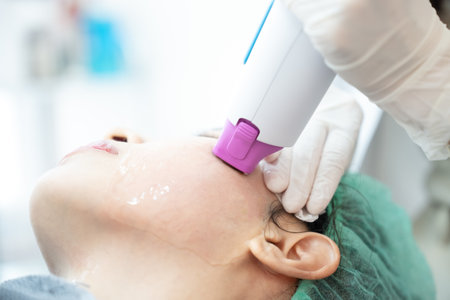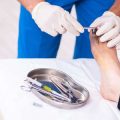Understanding Laser Skin Resurfacing
If you’ve ever looked in the mirror and wished you could hit a “refresh” button for your skin, you’re not alone. That’s basically what laser skin resurfacing is all about. It’s a popular treatment in American dermatology clinics for tackling everything from fine lines to acne scars, sun damage, and uneven texture. But before we get into how often you should do it for the best results, let’s break down what it actually is, how it works, and the types you’ll usually hear about at your local clinic.
What Is Laser Skin Resurfacing?
Laser skin resurfacing is a cosmetic procedure that uses focused beams of light (lasers) to remove damaged skin layer by layer. The goal? To reveal newer, healthier-looking skin underneath. Think of it as giving your face a serious tune-up. This treatment can help with things like wrinkles, age spots, acne scars, and even overall dullness.
How Does It Work?
The science behind it is pretty cool. The laser creates controlled injuries to the outer layers of your skin. When your body heals these micro-injuries, it produces new collagen and elastin—two things that keep your skin firm and smooth. In other words, your skin repairs itself but comes back better than before.
Common Types of Laser Skin Resurfacing in the U.S.
When you walk into most American dermatology clinics, you’ll find two main categories of lasers being used: ablative and non-ablative lasers. Here’s a quick breakdown:
| Type | How It Works | Downtime | Best For |
|---|---|---|---|
| Ablative Lasers (CO2, Erbium) |
Removes outer layers of damaged skin | 7-14 days | Deep wrinkles, scars, severe sun damage |
| Non-Ablative Lasers (Fraxel, Nd:YAG) |
Heats underlying skin without removing top layer | Minimal (redness for 1-2 days) | Mild wrinkles, minor discoloration, subtle texture issues |
Ablative vs. Non-Ablative Lasers
If you want dramatic results and don’t mind a week or two of downtime (think peeling and redness), ablative lasers might be your go-to. If you’re looking for something gentler with less recovery time—and are okay with doing more sessions—non-ablative lasers are a solid pick.
Fractional Lasers: The Middle Ground
Many clinics also offer fractional lasers (like Fraxel), which treat only a fraction of the skin at a time by creating microscopic columns in the skin tissue. This speeds up healing since surrounding areas stay untouched. Fractional lasers can be either ablative or non-ablative depending on the setting used.
This variety gives you options based on how much downtime you can handle and what kind of results you’re after. Next up: how often should you get these treatments to really see the magic happen?
2. Typical Recovery Timeline and What to Expect
Laser skin resurfacing is a game changer, but let’s be real—recovery is part of the deal. Whether you’re a first-timer or you’ve had a few sessions under your belt, knowing what to expect makes the whole process way less stressful. I’ll break down what recovery looks like from my own experience, mixed with some expert-backed facts so you can plan ahead and get the best results.
What Happens Right After Your Session?
The moment your session wraps up, your skin will feel warm—almost like a sunburn. There’s some redness and swelling, which is totally normal. For me, that “hot” feeling lasted about 12 hours, then it gradually faded.
Day-by-Day Recovery Timeline
| Day | What to Expect | Care Tips |
|---|---|---|
| 1-2 | Redness, swelling, mild discomfort (like a sunburn) | Use ice packs, gentle cleanser, skip makeup |
| 3-5 | Peeling starts, skin feels tight and dry | Apply moisturizer often, avoid picking at skin |
| 6-7 | Most of the peeling subsides; pinkness remains | Sunscreen is a must if you go outside |
| 8-14 | Skin tone evens out; residual redness may linger for some people | Keep moisturizing; use gentle products only |
Expert Insights on Downtime
According to dermatologists in the U.S., downtime depends on the type of laser used. Non-ablative lasers (the milder kind) usually mean less downtime—think 2 to 4 days. Ablative lasers are more intense and can have you healing anywhere from 7 to 14 days. My personal experience lines up with this: after an ablative session, I needed about a week before I felt comfortable seeing people again.
Caring for Your Skin Post-Laser: Pro Tips from the Trenches
- No Sun: Sun exposure is your enemy post-laser. Always wear broad-spectrum SPF 30+ if you have to head outside.
- Avoid Picking: Peeling or flaking is normal—don’t pick at it! It could cause scarring or delay healing.
- Mild Products Only: Skip anything with retinol or acids until your skin has fully healed. Stick to gentle cleansers and fragrance-free moisturizers.
- Avoid Heavy Workouts: Sweat can irritate freshly lasered skin. Take it easy for at least a few days.
- Stay Hydrated: Drinking plenty of water helps your skin bounce back faster.
If you’re someone who likes getting right back into their routine (like me), just know that patience pays off here. The better you take care of your skin during recovery, the better your results will look—and the easier each session becomes down the road.
![]()
3. Recommended Frequency According to Skin Concerns
When it comes to laser skin resurfacing in the US, how often you should get treatments really depends on what you’re trying to fix. Most clinics and dermatologists tailor their advice based on whether you’re dealing with acne scars, wrinkles, or sun damage. Here’s a breakdown of what people usually do, so you can figure out what might work for your own situation.
Laser Resurfacing Frequency by Skin Issue
| Skin Concern | Typical Frequency | Why This Schedule? |
|---|---|---|
| Acne Scars | Every 4-6 weeks (series of 3-6 sessions) | It takes multiple sessions to break down scar tissue and encourage new collagen. Most guys I know who had old acne scars saw noticeable changes after 3-5 rounds. |
| Wrinkles & Fine Lines | Once every 6-12 months (sometimes yearly maintenance) | A single session can give smoother skin, but touch-ups help keep those lines from coming back. If your lines are deep, the doc might recommend a couple sessions close together at first. |
| Sun Damage & Pigmentation | Every 2-3 months initially, then as needed | If you spent a lot of time outdoors (like I did), it may take several rounds to fade spots and even out tone. Once things clear up, most just go back if new sun spots pop up. |
What Influences How Often You Go?
- Type of Laser: More aggressive lasers (like CO2) need longer recovery and fewer sessions. Non-ablative lasers let you come back sooner and more often.
- Your Skin Type: Darker skin tones might need gentler treatments spaced further apart to avoid pigment issues.
- Your Lifestyle: If you spend a lot of time outside or don’t use sunscreen, you might need maintenance more often.
- Your Goals: Some people want quick results before big events, while others are fine spreading it out over months.
A Real-Life Example
I had some pretty stubborn acne scars from my college days. My derm recommended five sessions, one every month and a half. By the third round, I could see smoother skin in the mirror—not perfect, but way better than before. Friends dealing with wrinkles told me they just go once a year for upkeep after their initial round.
4. Factors That Affect Your Ideal Treatment Schedule
When it comes to figuring out how often you should get laser skin resurfacing for the best results, there’s no universal answer. Your perfect schedule depends on a mix of personal factors and professional advice. Let’s break down the key variables that come into play.
Skin Type Matters
Your skin type is one of the first things your provider will look at. If you have oily or thicker skin, you might tolerate treatments more frequently than someone with sensitive or very dry skin. People with darker skin tones also need to be careful, as some lasers can cause pigmentation changes if used too often.
| Skin Type | Recommended Frequency |
|---|---|
| Oily/Thick | Every 3-6 months |
| Normal/Combination | Every 6-12 months |
| Sensitive/Dry | Every 12+ months (or as advised) |
| Darker Tones | Cautious approach; consult your provider |
Lifestyle Plays a Role
If you spend a lot of time outdoors, smoke, or don’t always stick to a good skincare routine, your skin might need more frequent touch-ups—or maybe more recovery time between sessions. Guys who work in construction or play outdoor sports should talk honestly with their provider about sun exposure and lifestyle habits.
Your Age and Skin Goals
Younger folks usually bounce back quicker and may not need treatments as often. If you’re aiming to tackle deep wrinkles or old acne scars, you might need a series of sessions spaced closer together at first, then switch to maintenance mode once you see improvements.
| Age Group | Treatment Frequency (General Guideline) |
|---|---|
| 20s–30s | Every 12–18 months (maintenance) |
| 40s–50s+ | Every 6–12 months (depends on goals) |
Professional Recommendations Always Count
No matter what, your dermatologist or laser technician’s input is crucial. They’ll assess your progress after each session and adjust the plan based on how your skin reacts. Sometimes less is more—especially if your skin needs extra time to heal or you’ve got other treatments in the mix.
5. The Role of Maintenance Sessions
If you’re anything like me, you probably know that getting laser skin resurfacing is just the beginning—not the whole story. Think about it like taking care of your car after a fresh detail or keeping your lawn looking sharp after that first mow in spring. Sure, things look great right after the main event, but if you want those results to stick around, maintenance is key.
Why Follow-Ups Matter
After your initial round of laser treatments, your skin will look and feel refreshed. But just like hitting the gym or keeping up with oil changes, regular upkeep keeps things running smoothly. Most dermatologists recommend scheduling follow-up sessions every 6–12 months, depending on your skin type and goals. These touch-ups help tackle new spots, fine lines, or uneven texture that pop up over time—because life (and aging) doesn’t hit pause.
Maintenance Compared to Everyday Routines
Let’s break it down with some everyday American habits:
| Laser Skin Resurfacing | Everyday Equivalent |
|---|---|
| Initial treatment series | Spring cleaning the house |
| Follow-up/maintenance session | Weekly tidying up |
| Skipping maintenance | Letting dishes pile up for weeks |
The American Lifestyle Connection
In our fast-paced, outdoor-loving culture—whether you’re hiking on weekends or commuting under the Texas sun—your skin takes a beating. Regular maintenance sessions act like reapplying sunscreen at a ballgame: they protect all the work you’ve already put in. And honestly, booking a quick appointment every few months feels way easier than starting all over again.
Key Benefits of Maintenance Treatments
- Sustained Results: Keeps your skin looking as fresh as that first selfie post-treatment.
- Catches Issues Early: Addresses new sun spots or fine lines before they get worse.
- Saves Time and Money: Small touch-ups now mean fewer big procedures later.
Your Personal Routine Matters
The right schedule depends on your lifestyle. If you’re outdoorsy or have fair skin, you might need more frequent visits. If you mostly work indoors, maybe less often. Your dermatologist can map out what’s best for you—just like having a personal trainer for your skin.
6. Potential Risks of Overdoing It
If you’re like me, after seeing some solid results from your first laser skin resurfacing treatment, you might be tempted to book your next session ASAP. But here’s the thing: getting laser skin resurfacing too often can actually backfire. Based on my own experiences and what dermatologists across the US are saying, there are real risks to overdoing it.
What Happens If You Get Laser Skin Resurfacing Too Frequently?
Laser treatments work by creating controlled injuries to your skin, triggering your body’s natural healing process and boosting collagen production. But if you don’t give your skin enough time to fully recover between sessions, things can go south quickly. Here’s what you might face:
| Potential Risk | What It Means | Dermatologists Advice |
|---|---|---|
| Delayed Healing | Your skin may stay red, swollen, or sensitive for longer than usual. | Wait at least 4-6 weeks (sometimes more) before the next session. |
| Hyperpigmentation or Hypopigmentation | You could develop dark spots or light patches on treated areas. | Avoid sun exposure and follow aftercare strictly; don’t rush sessions. |
| Scarring | Frequent treatments increase the risk of permanent scarring. | Stick with a dermatologist’s recommended schedule. |
| Thinning Skin | Your skin may become thin and fragile if treated too much. | Space out treatments and allow full recovery. |
| Irritation & Breakouts | Sensitive, overworked skin is prone to breakouts and rashes. | Only treat as often as needed based on your skin type. |
The Bottom Line From Dermatologists (and Guys Like Me)
Most board-certified dermatologists in the US recommend waiting at least 4-8 weeks between non-ablative laser sessions and up to 6 months for ablative lasers. I learned this the hard way after pushing for quicker results—my skin didn’t thank me for it. The best move? Always follow your doctor’s advice on timing and trust the process. Your skin needs downtime to rebuild and look its best. So, as tempting as it is to speed things up, patience really does pay off when it comes to laser resurfacing.


